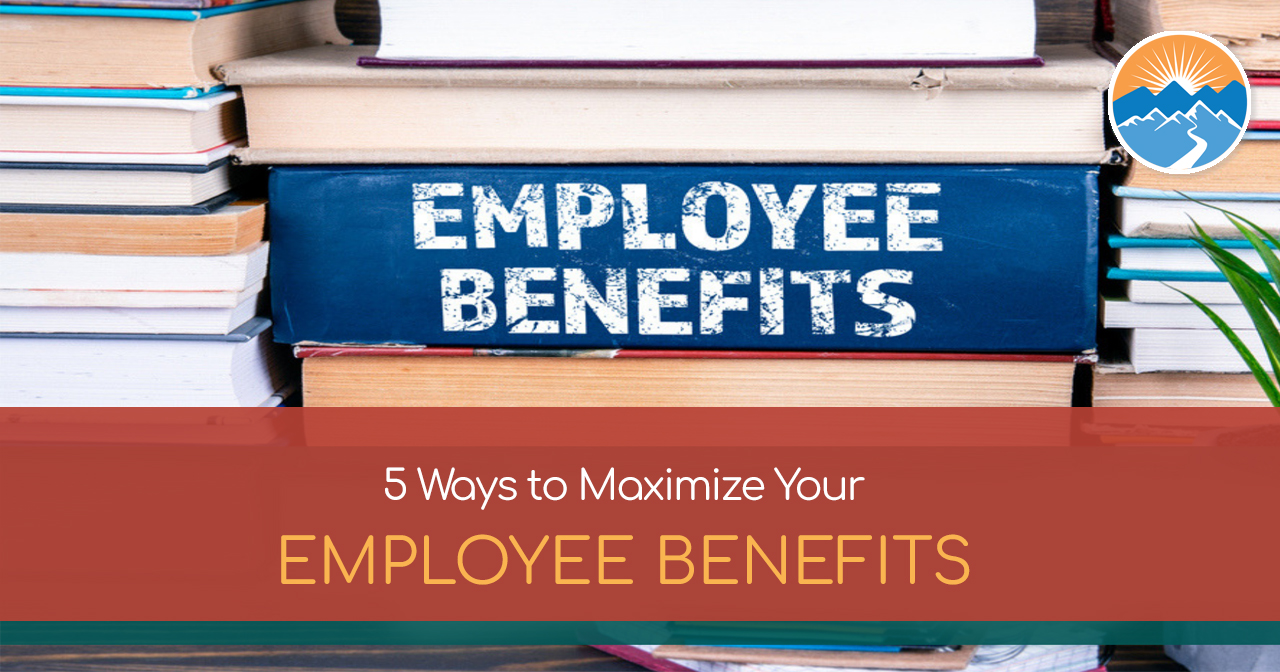5 Ways to Maximize your Employee Benefits
Looking through an employee benefits packet can be overwhelming, especially if you just started a new position. But the decisions you make about your benefits now could potentially have a large impact on your future finances. Here’s five important areas to pay attention to during your enrollment period:
1. Life insurance:
You don’t want to suddenly leave dependents without income, or force family members to pay funeral expenses or settle debts out of their own pockets. Life insurance is about protecting your income, so it’s important to have some level of coverage in place that meets your specific needs. Many employers provide at least a basic life insurance policy. However, their coverage may not be enough to replace your income for long enough and is typically not portable if you leave. This is why it’s generally a good idea to shop for coverage on your own. Having your own policy ensures that you have the coverage you need regardless of your employment, and it allows the employer-provided coverage to act as an additional layer of protection rather than the only one.
Keep in mind that the longer you wait to get coverage on your own, the more expensive it will likely be.
Keep in mind that the longer you wait to get coverage on your own, the more expensive it will likely be.
2. Disability Insurance
Anyone depending on employment for income should have some sort of long-term disability insurance in place. This can protect your income in the event you become unable to work for weeks, months, or longer. Many employers provide either free or low-cost long-term disability insurance that can pay you 50-60% of your income while you’re unable to work. Employer-provided long-term disability insurance is typically not portable, and any benefits you receive are taxable income if your employer paid any portion of the premiums. In contrast, a private plan will can pay 60-70% of your income if needed, and the benefit is tax-free. If your employer’s long-term disability insurance is not provided for free, be sure to compare the costs
and benefits with options for purchasing it yourself.
3. Health Insurance
There is no one-size-fits-all solution when it comes to choosing the right health insurance option. If you’re unsure what option to take, look at your medical expenses from the previous year. If they were relatively low and your family is in good health, a high-deductible plan might be a good option for you since it keeps the premium costs lower. The trade-off is that if any large
medical events do occur, you will have to pay a higher portion of the costs. If there are any ongoing health issues in your family, or your kids are prone to emergency room visits, a plan with higher premiums but lower co-pays and deductibles might be a better option.
4. Health Savings Accounts
If you have a high-deductible health insurance plan, you can take advantage of a Health Savings Account, or HSA. These are pre-tax accounts that allow you to set aside money for medical expenses, typically through payroll deductions. When HSA funds are used for qualifying medical expenses, the distributions are also tax-free. Some employers will even contribute to your HSA
as an additional benefit. While there is a maximum amount you can contribute to an HSA each year, there is no time limit on when you must use the funds, and the account is portable if you leave your employer.
5. Flexible Spending Accounts
A flexible spending account, or FSA, is another type of pre-tax account for medical expenses that does not require a high-deductible health insurance plan. Distributions for qualifying medical expenses are still tax-free, but these accounts differ from HSAs in that they are owned by your employer, and therefore not portable, and the funds must be used each year. FSAs require more planning than HSAs, so it’s necessary to consider your medical spending history. Contribute too
much and you could lose what you don’t spend. Contribute too little and you’ll lose the tax-free
benefits on any additional medical expenses.
A flexible spending account, or FSA, is another type of pre-tax account for medical expenses that does not require a high-deductible health insurance plan. Distributions for qualifying medical expenses are still tax-free, but these accounts differ from HSAs in that they are owned by your employer, and therefore not portable, and the funds must be used each year. FSAs require more planning than HSAs, so it’s necessary to consider your medical spending history. Contribute too
much and you could lose what you don’t spend. Contribute too little and you’ll lose the tax-free
benefits on any additional medical expenses.
For more information on maximizing your employee benefits, check out Erik Schei’s recent webinar using this link. The more clarity you have now, the better decisions you can make along the path to living your best day, every day
If you would like to speak with Esther or Erik about this subject or any other related personal financial matter:
ESTHER SZABO
CFP® , Certified Financial Transitionist®
Founder and CEO, Gates Pass Advisors
BOOK A CALL with ESTHER
ERIK SCHEI
CFA, Certified Financial Transitionist®
Associate Advisor, Gates Pass Advisors
BOOK A CALL with ERIK
| Categories:




